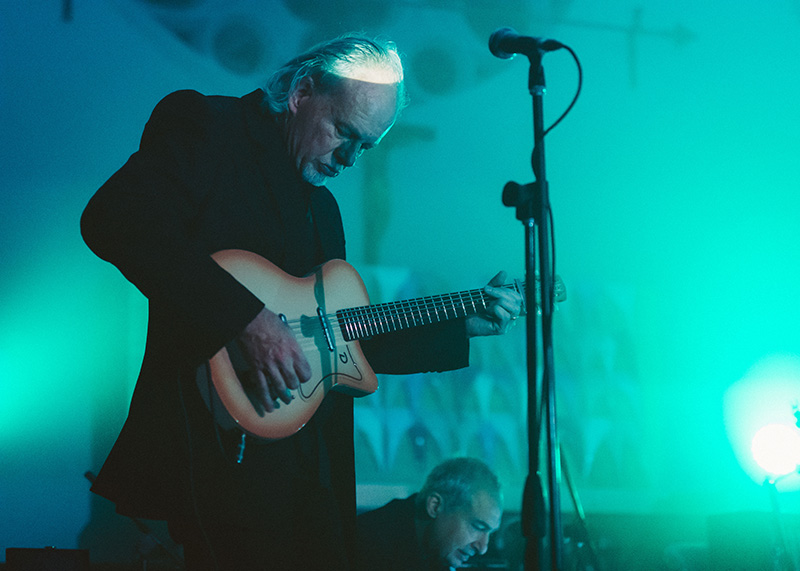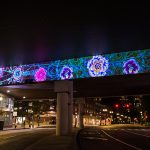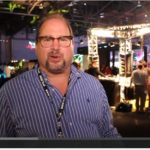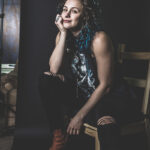
Art Rock Bands Enhance Live Shows with Affordable Media and Tools
Two veteran art-rock acts are applying video software to enhance their live performances. New York City-based ambient instrumental country band Suss, and The Security Project, a tribute act reimagining Peter Gabriel’s slightly esoteric ethno-techno pop rock, benefit from resident multi-media mavens, who’ve spent years collecting, designing and customizing imagery for live concerts,
Banks of digital libraries — a veritable lifetime of images — underscore the timeless quality of the material these artists perform, engage concert attendees in ways only the visual arts can, and expand the scope of their stage productions, sometimes radically so, from night to night.
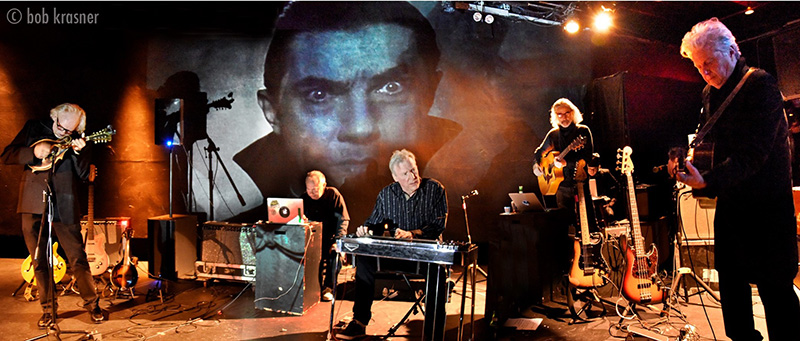
Suss
Suss gained a following by seamlessly stitching together looped, minimalistic ambient music, as popularized by Brian Eno, with the idiosyncratic sweep of Spaghetti Western scores composed by Ennio Morricone. Fusing these diverse sounds and influences hasn’t come easy — it was the result of decades of musical growth and experimentation. Indeed. The band features musicians who’ve collaborated or played with David Bowie, John Cale, Ed Sheeran, Wilco, Norah Jones, B-52s, Lydia Lunch, k.d. lang, The War on Drugs and even Burt Bacharach.
Likewise, the visual component of the band’s concert productions, the seeds of Suss’s search for visual media bliss, stretch back to the early 1980s, when mandolin player/guitarist/bassist/harmonica man Bob Holmes and keyboardist/video operator Gary Leib were members of the Rhode Island-based New Wave/country band Rubber Rodeo.
Inspired by the likes of Devo and Human Sexual Response, Rubber Rodeo introduced theatrical elements into their live shows and entered the world of multi-media art.
“Doug Allen, the bass player, and I drew pictures of the moon,” says Leib. “We did maybe 80 different drawings that we shot onto slides. The projector was on automatic, so we had a different image over us as we played.”
“We had a stage set with plywood cacti and paintings of buzzards, moonshine jugs and campfires, all hand-painted by Doug and Gary,” says Holmes, whose brother Barc plastered the shells of his drums with adhesive contact paper resembling red-and-white checkered tablecloth.
Suss has reunited Holmes and Leib who are joined by pedal steel and dobro player Jonathan Gregg, guitarist and loop maven William Garrett and guitarist/keyboardist Pat Irwin. “We saw a connection between the ‘High Lonesome’ sounds of Glen Campbell and ambient sounds of Brian Eno,” says Holmes, who now heads up the digital agency Sudden Design.
Suss’s 2018 debut, Ghost Box, racked up 6 millions listens on Spotify and has recently been reissued with four extra tracks. A two-song, seven-inch EP featuring “Chisholm Trail” was released in late June. (Downloads available at sussband.com.)
Songs on Ghost Box, such as “Wichita,” “Laredo” and “Laramie,” contain purposefully evocative titles, deceptively referencing geographic locations. “In general, we didn’t use words that indicated moods, but that indicated place,” says Holmes. “It’s a mythical place. Gary and I didn’t grow up in the West — none of us did in the band — and our concept of what constitutes the West is through media images.”
The German word, sehnsucht, is a slippery term that can be interpreted as not only a deep form of regret but feeling homesick for a time and place we’ve never experienced. Suss seems to tap into this ineffable yearning through their ambient music and video images Leib enhances in real time.
“Even though Leib uses a lot of retro images, most of the audience that sees our stage shows didn’t live through those images the first time around,” says Holmes. “When the audience sees a cowboy image from the ‘50s or ‘60s, Gary and I probably saw that on TV. Looking at pictures of astronauts going to the moon, it’s hard to believe that human beings would travel to a different planet. THAT’S ancient history, but it’s supposed to be about the future.”
In the mid-20th Century, the powers that be sold us the promise of a bright future powered by environmentally conscious technological advancements that would usher in a New Society programmed by benevolent bureaucrats. Steely Dan’s Donald Fagen adopted a pre-1960s mindset to write “I.G.Y. (What A Beautiful World)” as an ironic ode to this optimistic view. “Just because we were cheated out of that future doesn’t mean that everybody else can’t have it somehow,” says Leib. “We’re not bitter about it at all,” he laughs.
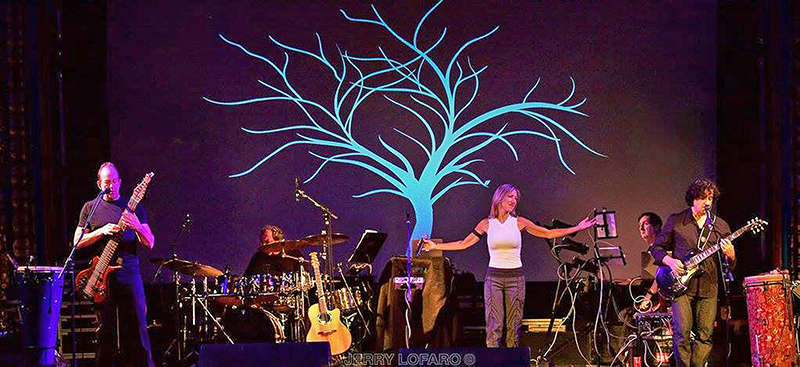
Space Cowboys
Their retro-futuristic images speak not only to the forgotten dreams of the past, but the growing storms on the proverbial horizon and nagging challenges of the present. Suss’s glacial sonic expanse provides a running narrative for the visuals. This intoxicating multi-media presentation, less time capsule than “time bomb,” reveals new, explosive truths about the world and ourselves each time we experience it.
“Suss is about creating an atmosphere in a given room,” says Holmes. “Every room we play, that atmosphere is going to be different in how we react to that atmosphere and the crowd, and how the crowd reacts to us. The music subtly changes. Gary is the best example of this: he’s not going to play the same sounds or show the same images in the same order as he did the night before.”
In his other life, Leib is an animator, a cartoonist and the co-creator (with former Rubber Rodeo bassist Doug Allen) of the comic book Idiotland, published by Fantagraphics. Using a multi-channel digital software package called AVmixer, (an affordable program made by Neuromixer that features real-time video effects one can apply live), Leib designs and customizes video clips and loops.
Using a BenQ MW632ST WXGA, short-throw projector that pumps out light with the intensity of 3200 Lumens, the band beams images on projection screens (when available), a venue’s back wall, their equipment and even themselves as they perform on stage. The projector, says Leib, is positioned “wherever we can put it.”
You never know what you’ll see at a Suss show with Trickster Leib at the controls. In one moment, a 1920s ingénue appears to interact with Bela Lugosi as Dracula. At other times, rolling cloud-like gaseous formations are overlaid onto the sinister and blanched grimace of Lon Chaney as the Phantom of the Opera. “Frequently, heads fall in the same place so I can make those heads blend,” says Leib. “Transparency is a powerful tool.”
When PLSN spoke with Suss, it was hours prior to their scheduled concert later that evening in Brooklyn, NY. Leib had been immersing himself in clips of vintage monster movies and other genres. “Bob doesn’t know this, and he’s going to hear this right now, but I have some loops from early ‘70s cinema that I haven’t used before,” says Leib.
Holmes let out a slight nervous laugh before expressing an “Uh-oh.” But he was half-joking in his trepidation leading up to the band’s concert. Injecting their performances with a dose of the unexpected has helped forge Suss’s name in the concert circuit in the New York metropolitan area during the last couple of years. “I should say that, except for Gary, the rest of us have not really seen the videos that get projected around us or behind us,” says Holmes. “We see them when some of them get posted online and when Gary turns them into videos.”
“Every show is different,” says Leib. “There has to be risk, otherwise why bother?”
The Security Project
Operating on the other end of the country, Warr/10-string touch guitarist and Seattle-area resident Trey Gunn, formerly of the progressive rock band King Crimson, enhances the music of Peter Gabriel through thought-provoking imagery and fresh perspectives on classic songs.
The Project commenced operations in 2012, commemorating the 30-year anniversary of Gabriel’s fourth self-titled solo release, a.k.a. Security, which, coincidentally, featured Gunn’s former Crimson bandmate, Chapman Stick player/bassist Tony Levin.
The Project lineup includes Gunn, drummer Jerry Marotta, a one-time member of Gabriel’s early solo band, guitarist Michael Cozzi (Shriekback), keyboardist David Jameson, and vocalist/acoustic guitarist Happy Rhodes, whose four-octave range roams the full spectrum of emotional expression found in the music the band covers, which includes Genesis and Kate Bush.
The Slowburn record, issued in May 2019, illustrates the band’s musical depth and appeal. (Downloads are available at securityprojectband.com.) “It helps having Jerry, because I was shocked how much the feel of some of this music came from him,” says Gunn. “The big leap was adding Happy [in 2016]. It’s about getting inside the song.”

Foreshadowing
Gunn cultivated a fascination with visual narrative that has spanned most of his career. Prior to The Security Project, Gunn released 2008’s MUSIC FOR PICTURES, which presents material from 1998 through 2006, albeit with radical alterations, created for multi-media performances. In addition, a collaboration with producer/multi-instrumentalist Joe Mendelson on the audiovisual project Quodia led to 2007’s The Arrow: A Story in Seven Parts. Variability was a basic element of the production.
“The opening section of the piece was fascinating to perform, because I was telling a story and certain words would … drift across the screen,” Gunn tells PLSN. “Through monitors, Joe and I were watching the video and I would tell the story that would be close enough in sync with the imagery. However, if the text came up late it was an echo. If the text came up early then it was a foreshadowing. It was super-interactive.”
It was Gunn, along with longtime musical partner Pat Mastelotto, one of three drummers currently in King Crimson, still under the watchful eye of co-founder and guitarist Robert Fripp, who saw opportunities to introduce various lighting elements into Crimson’s live shows in the early 2000s. Of course, they were given a big boost by former Crimson lighting designer Tim Kane, who experimented with different looks, including projecting light onto inflatable props, dubbed “tusks,” which created multi-shadow effects. “It reminded me of H.R. Giger’s artwork,” Kane told this writer in 2012.
As The Security Project picked up momentum, touring North America, Europe and Japan over the last five years, imagery became more and more prevalent in communicating concepts. Video and moving images were sparse, at first. “Now every song has some video except for one track,” says Gunn.
Gunn explains that four of the “more abstract [videos] — ‘I Have The Touch,’ ‘The Family and the Fishing Net,’ ‘Fly On a Windshield’ and ‘Lay Your Hands On Me’ — were done by a Japanese animation student studying here in Seattle, named Tomoki Arakawa. Many of the new videos — ‘Wallflower,’ ‘Humdrum,’ ‘Mother Of Violence,’ ‘The Lamb Lies Down On Broadway’ — were done by Doug Hatley. We have slowly been moving to animations, although the slide shows are surprisingly effective. There are tunes where we have nothing on a screen for two minutes. You forget that there is a screen back there and then something will creep in.”
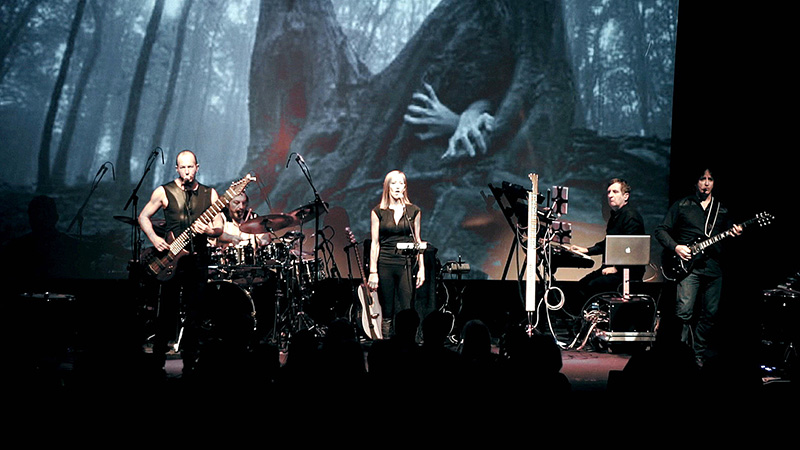
D.I.Y.
Apple’s Keynote presentation software was being employed to trigger images from an iPad, but recently, the band switched to ART Teknika Inc.’s Colorcode VJ application for control. “It’s old school TV production, with A and B channels,” says Gunn. “You play A [channel] while you cue up B, and then you can crossfade between the two. You can change speed, start it over again, slide the timeline to another section, cue up stuff. Total DJ style.”
This facility has helped The Security Project present a more richly symbolic production. For instance, crossfading several natural landscapes has bolstered the Native American spiritualism inhabiting the tune, “San Jacinto.” “Nothing is hitting right on the beat at all, ever,” says Gunn. “I like the blur between the real time and the screen.”
“Wallflower,” written at the dawn of Gabriel’s commitment to international human rights, is believed to be about the plight of a political prisoner. Images of a single light bulb swinging back and forth from the ceiling are somewhat abstract, even if this image was lifted directly from the intense song. It’s an obscure reference, but it works. For other songs the visual accompaniment is a bit more obvious.
“A few songs are on the nose, like ‘Family Snapshot,’” says Gunn. “It’s about an assassin, and we’ve used a couple of images of J.F.K.”

Animation of the surrealistic Escher-esque drawings from the original vinyl LP’s inner sleeve was designed and applied to the paradoxical and psychologically based title track of Genesis’ 1974 concept double album, The Lamb Lies Down on Broadway. Other songs from the same record received The Security Project treatment. “Jerry collected a whole bunch of images that we use in the track ‘Back in NYC.’” says Gunn. “It’s a photomontage that … puts a clearly dramatic element into a musical context.”
The Security Project travels with its own screen (a 20-foot x 10-foot swatch of white Spandex) and often two projectors: a Sony VPL-FX500L with a brightness of 7,000 lumens and a Canon LV-7365 (3000 lumens). “Obviously, the brighter one is our first choice, but sometimes there just isn’t room to set it up,” says Gunn.
Although the FOH lighting operator at the venue usually handles the video duties, Gunn has been tempted to take control of video himself. “[I’d] need a foot controller for this, but it’s definitely something that can be done,” says Gunn. “I think this will be in my near future.”
